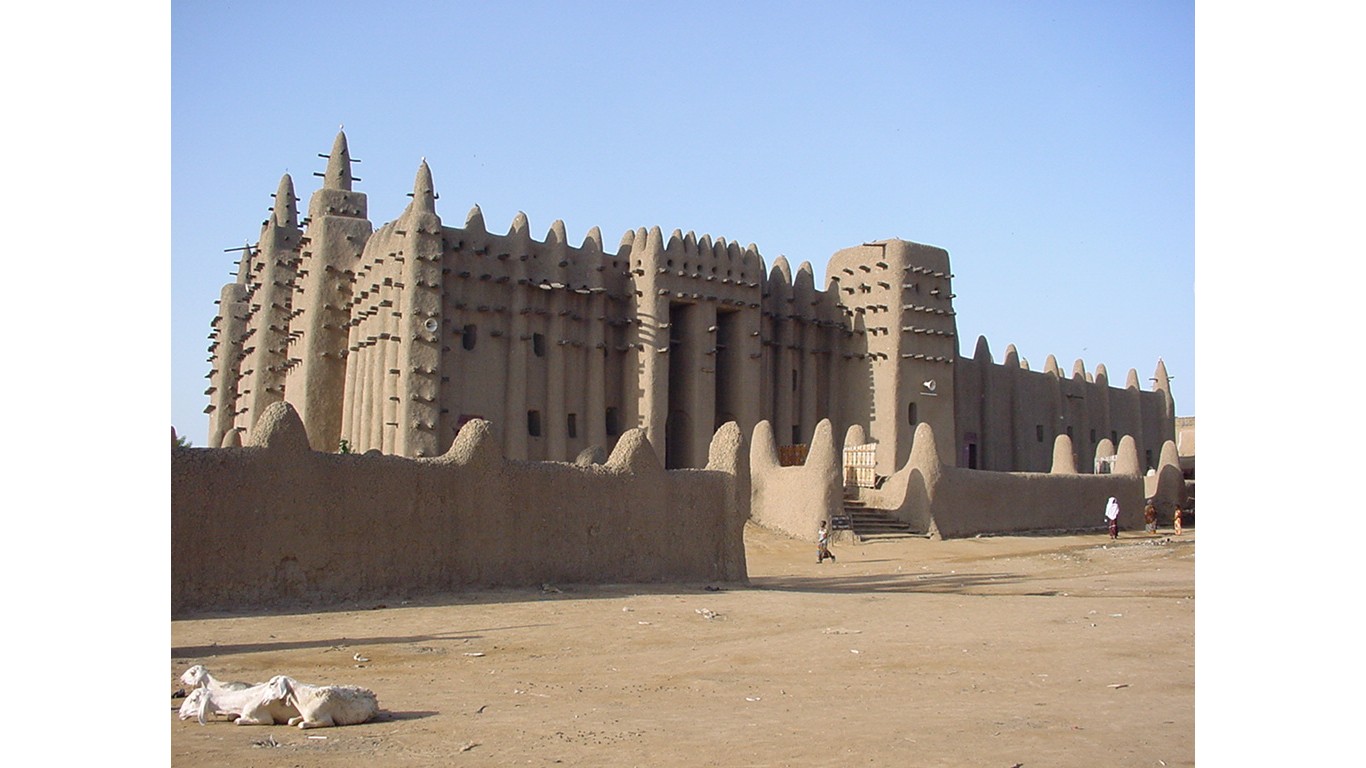
Has the sun finally set on the British Empire? Prince Charles thinks so. When Great Britain handed over Hong Kong to China in 1997, the heir to the British throne called it the “end of the Empire.” His mother, Queen Elizabeth II, the longest-serving sovereign in British history, has thus presided over the end of an empire that once ruled a quarter of the world. (These are the most famous female rulers in history.)
24/7 Tempo has put together a list of the last rulers of vanished empires, both ancient and more modern, based on information from several sources, including Britannica and Historyplex.
Some empires ended with a bang, others ceased to exist with barely a whimper. Wars, politics, and zeal for democratic principles. have spelt the end for many. The Byzantine Empire, which had lasted more than 1,000 years, disappeared in 1453 with the conquest of Constantinople and the death of the emperor, Constantine XI Paleologos, in a decisive battle with the Ottomans. The Holy Roman Empire, which also lasted about 1,000 years, was in effect ended by a decree from Napoleon in the early 19th century. (These are the longest-lived empires in history.)
Click here to see the last rulers of long gone empires
Click here to read our detailed methodology
At the start of the 20th century, some empires still dominated the world, with colonies in much of Africa and Asia as well as some in the Americas. The imperial quest for power and influence contributed to the start of World War I, a conflict that led to the end of imperial systems in Germany, Russia, Austria-Hungary, and the Ottoman Empire, while boosting the ambitions of the Japanese Empire. Other empires that had their roots in the Age of Discovery, those of Portugal and Spain, vanished into the mist of history in something close to our own times.
The British Empire began during the Age of Discovery as well, and its demise likely closes the final chapter of the age of empires, a legacy of international trade and ethnic interaction, but also of slavery, internal conflicts, cultural suppression, and environmental degradation.
Cleopatra VII Philopator
> Reign: 51-30 B.C.
> Empire: Egyptian
> Empire duration: 3100 B.C.-30 B.C.
The legendary Egyptian monarch was the last queen of the Macedonian Ptolemaic dynasty that ruled Egypt until it was annexed by Rome in 30 B.C. Cleopatra, who Julius Caesar’s lover and became the wife of Mark Antony, influenced Roman politics at a time when Rome was transitioning to an empire from a republic. After she and Antony committed suiсide, Egypt fell under the domination of Rome.
[in-text-ad]
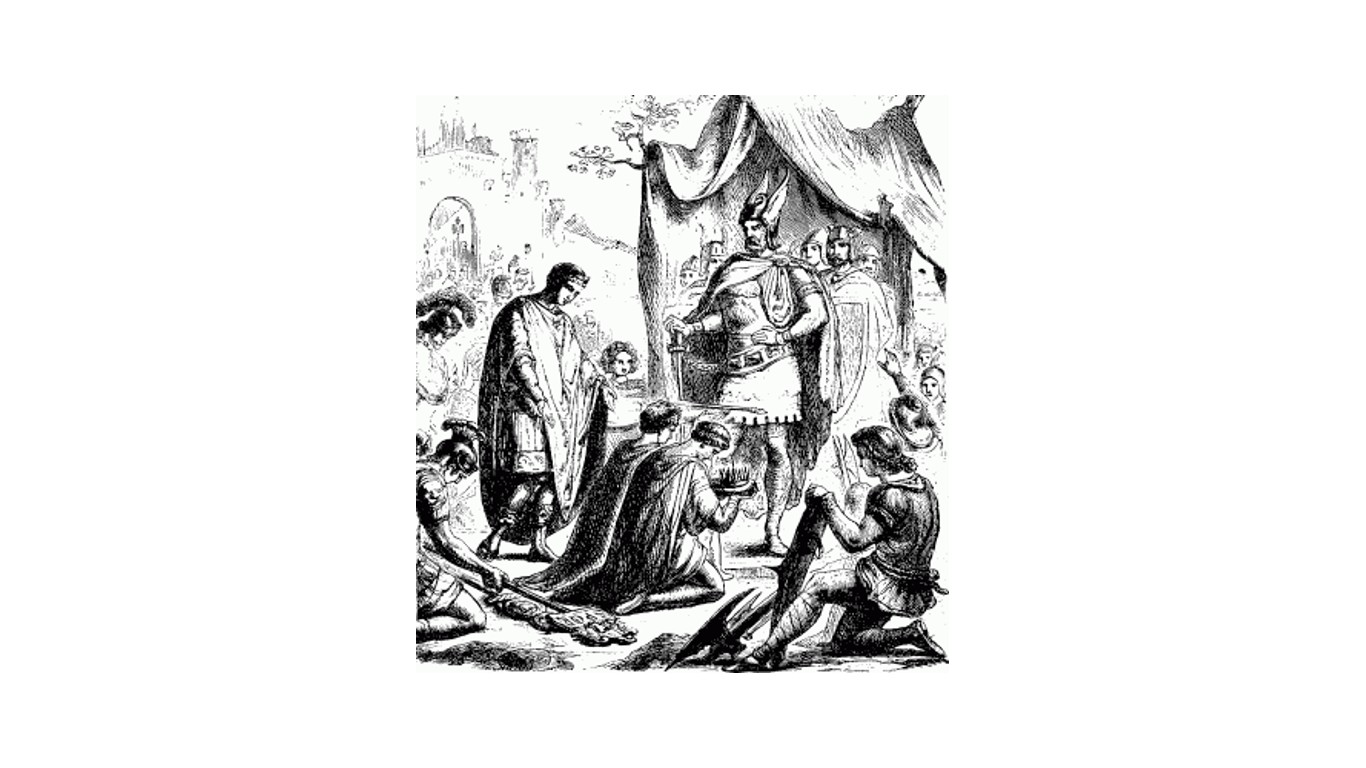
Romulus Augustulus
> Reign: 475-476
> Empire: Western Roman
> Empire duration: 286-476
After decades of attacks by the Goths and other marauders, combined with internal power struggles, ineffective rulers, and other factors, the Western Roman Empire finally succumbed in 476 . On that date, Odoacer, a Germanic warrior, became the first barbarian king of Italy, and his ascension to power is traditionally regarded as the end of the Western Roman Empire.
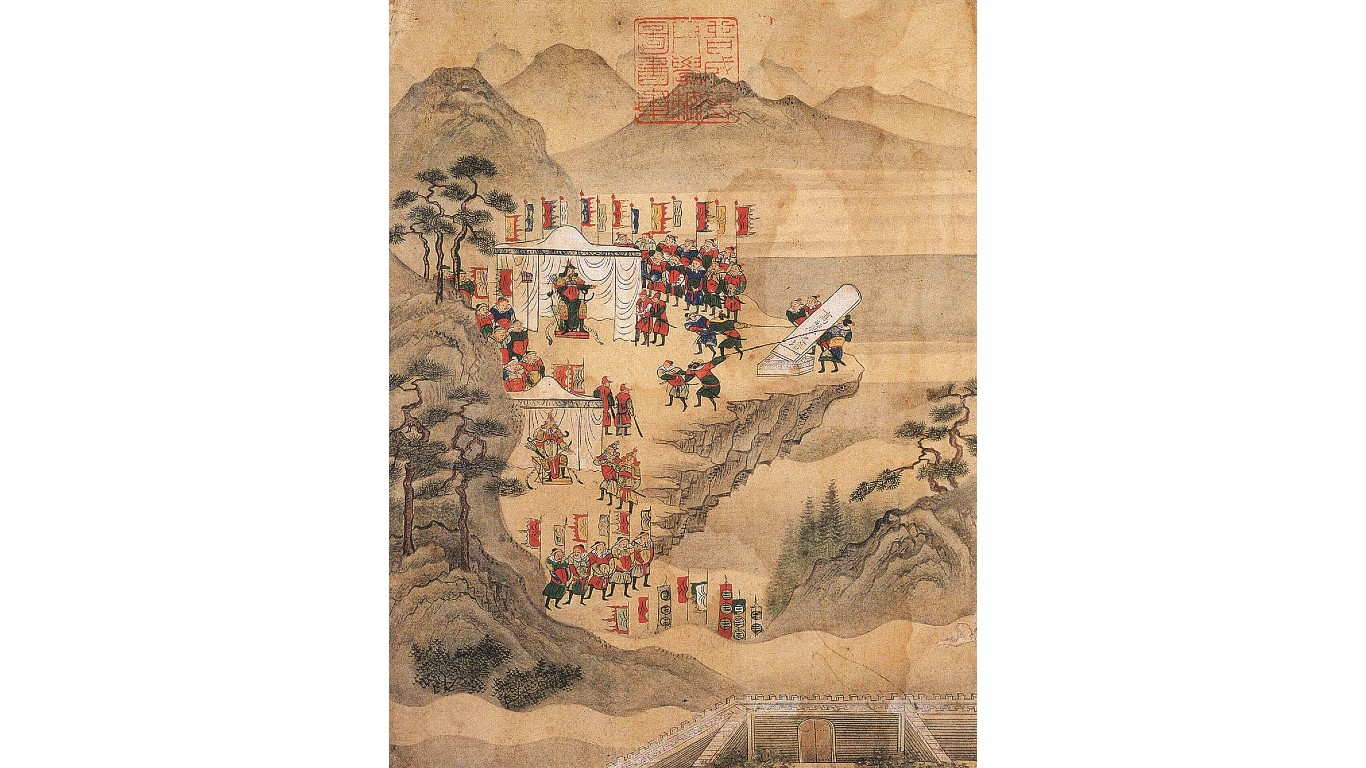
Gongyang of Goryeo
> Reign: 1389-1392
> Empire: Goryeo (Korea)
> Empire duration: 918-1392
Born Wang Ho, into a noble family, he was installed on the throne of Goryeo as King Gongyang by a powerful general, Yi Seong-gye. After Yi consolidated his power, he in turn deposed and exiled Gongyang, effectively ending the 474-year-old Goryeo Dynasty. Yi Seong-gye went on to establish his own Chosŏn (or Joseon) Dynasty, fending off invaders and naming made the city of Hanseong (or Hanyang) his capital. Today, that city is Seoul.
Constantine XI Palaiologos
> Reign: 1449-1453
> Empire: Byzantine
> Empire duration: 330-1453
Constantine XI Palaiologos, the last emperor of the Byzantine Empire, died in battle at the hands of the Ottoman forces. He’s famous for giving an impassioned speech to his troops as the defenses of Constantinople crumbled. His body was never found after the battle. He became known as “Marble Emperor,” because, according to legend, he did not die in the battle, but instead turned to stone, unable to bear to look at the demise of his beloved city.
[in-text-ad-2]
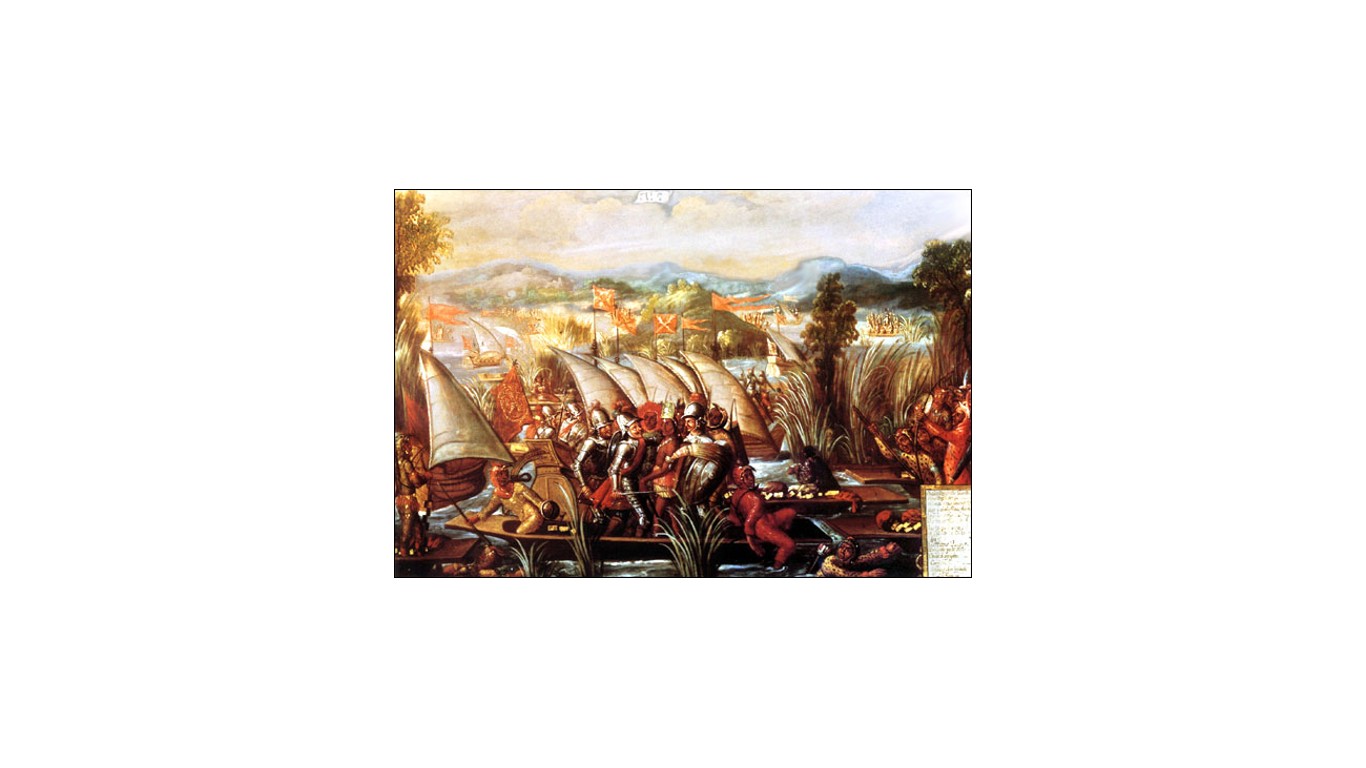
Cuauhtémoc
> Reign: 1520-1521
> Empire: Aztec
> Empire duration: 1345-1521
Cuauhtémoc was the last emperor of the Aztec Empire. After a four-month siege on Tenochtitlán, the Aztec capital, by the Spanish, he surrendered to the conquistador Hernán Cortés. The Spaniard demanded that the Aztec sovereign reveal the location of the Aztec treasure. He refused, despite being tortured, but he was allowed to live and retained some vestiges of power after being baptized a Christian. In 1525, Cortés took Cuauhtémoc on an expedition to Honduras, and along the way is said to have discovered a plot against the Spanish, so hanged the Aztec ruler.
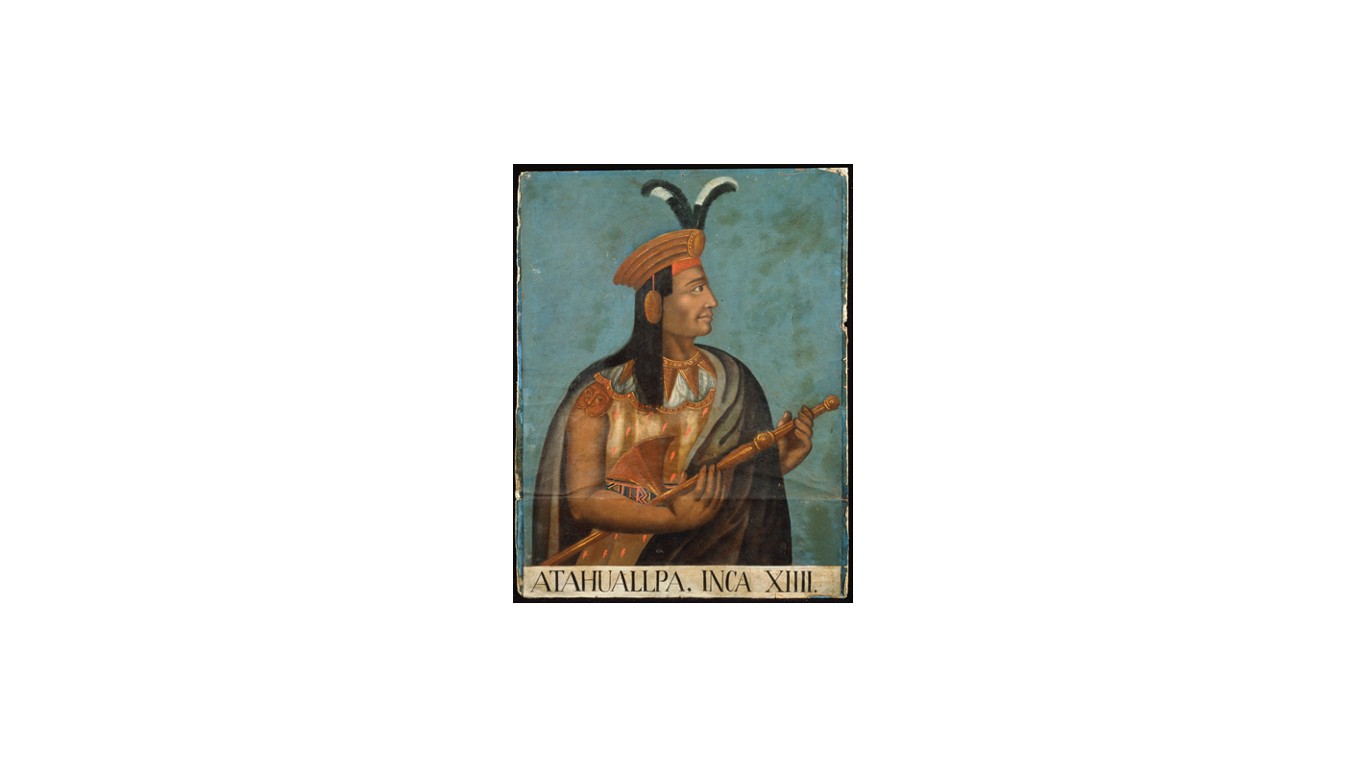
Atahualpa
> Reign: 1532-1533
> Empire: Incan
> Empire duration: 1410-1533
Atahualpa was the last Inca emperor, and ruled from just a year. Atahualpa had ascended the throne after a bloody succession battle with his brother, Waskar. That left the Inca empire weakened, so when the conquistador Francisco Pizarro arrived with Spanish troops, their superior weaponry and tactics defeated a much larger Inca force. Like the Aztec emperor Cuauhtémoc, Atahualpa was captured. Pizarro demanded ransom, and after tribute was paid, Atahualpa was executed.
[in-text-ad]
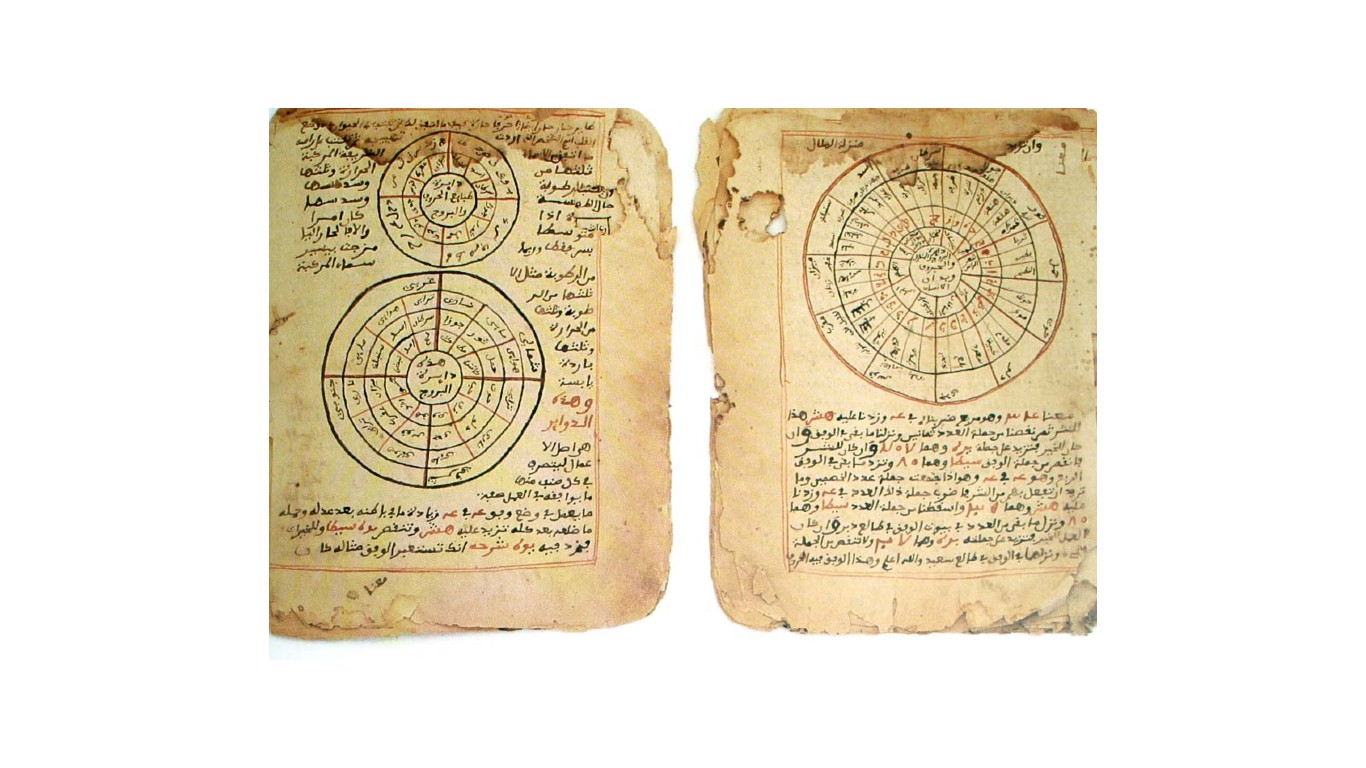
Askia Ishaq II
> Reign: 1588-1591
> Empire: Songhai
> Empire duration: circa 1464-1591
Songhai was the largest of Africa’s indigenous empires, extending over 540,000 square miles, stretching for 1,200 miles along the River Niger, into the Sahara to the north, and across the Sudan savannah to the south. Included in the empire was Timbuktu, an important center for Islamic learning. The empire succumbed to 16th-century military technology when a smaller force of Moroccan troops armed with cannon defeated a Songhai army more than 10 times its size.
Mahmud Keita IV
> Reign: circa 1590-circa 1610
> Empire: Malian
> Empire duration: 1230-1600
The Mali Empire was famed for its abundance of gold. At its height, it occupied parts of what is today Mali, Mauritania, Guinea, Senegal, and the Gambia. Its demise occurred in the early 17th century after Mali’s troops lost a major battle with Morocco – succumbing, like the Songhai slightly earlier, to Moroccan firepower. After Emperor Mahmud Keita IV died, no one successor was chosen, and the empire collapsed.
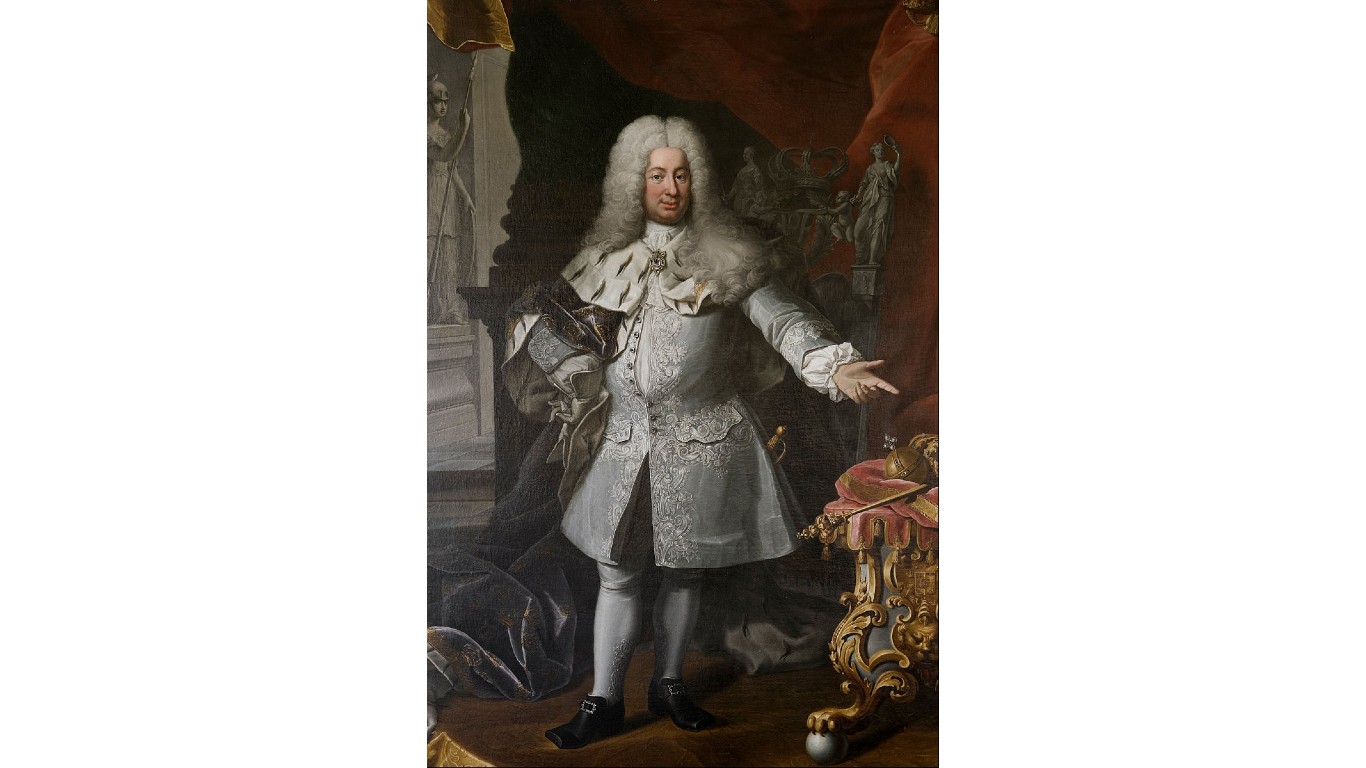
Frederick I
> Reign: 1720-1721
> Empire: Swedish
> Empire duration: 1611-1721
You don’t think of Sweden as an imperial force, but the Scandinavian nation was one of Europe’s great powers during the 17th and early 18th centuries, exerting control over the Baltic region. The empire is generally considered to have begun with the ascension to the throne of Gustavus Adolphus, who became Sweden’s sovereign in 1611. The end of the empire accompanied the loss of territories in 1721 in the wake of the Great Northern War, with the Treaty of Nystad.
[in-text-ad-2]
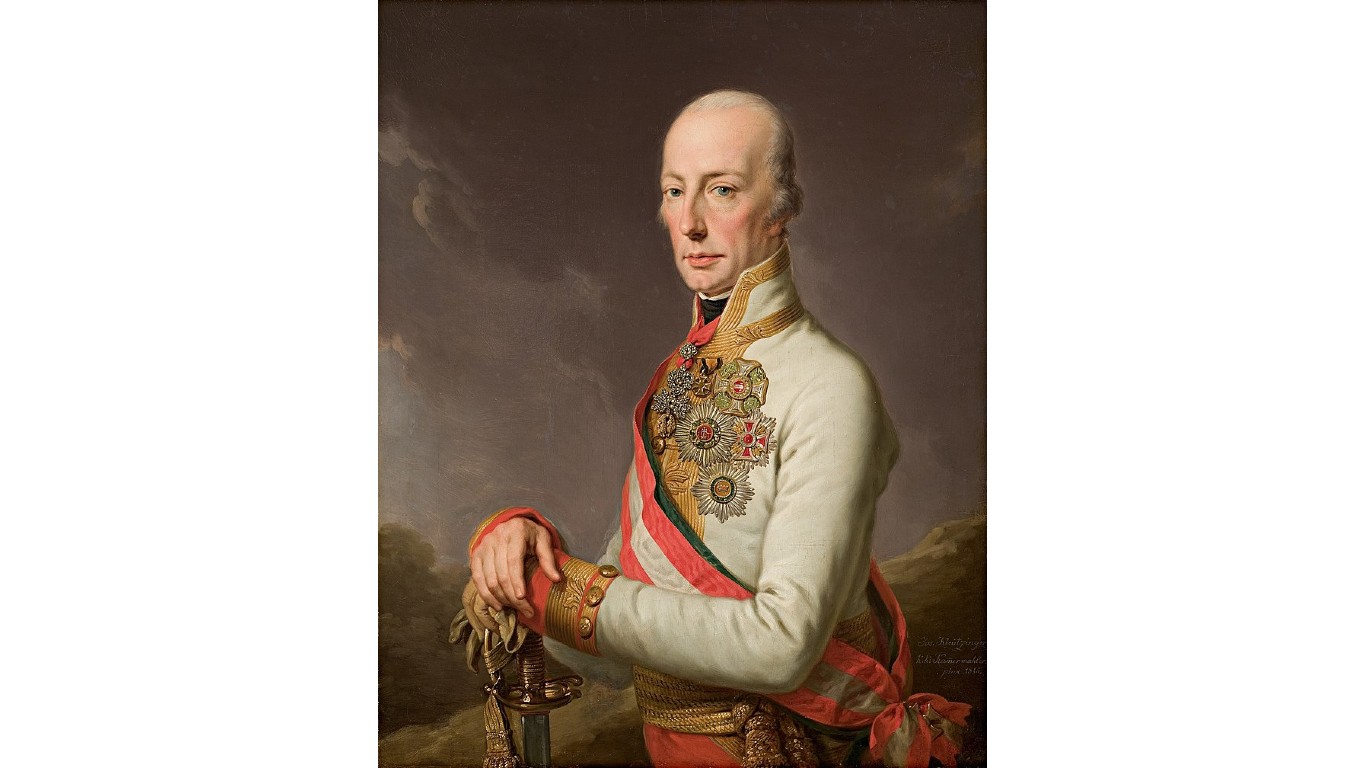
Francis II
> Reign: 1792-1806
> Empire: Holy Roman
> Empire duration: 800-1806
The writer Voltaire once said the Holy Roman Empire was “neither holy, nor Roman, nor an empire,” yet it lasted from the time of Charlegmagne to the era of Napoleon. And it was Napoleon who ended its 1,000-year-old dominion. The French emperor expanded his reach into the German-speaking areas of Europe, forming the Confederation of the Rhine that eventually included 16 German states. At that point, Napoleon declared the Holy Roman Empire no longer existed. When the confederated states officially seceded from the Holy Roman Empire, Emperor Francis II renounced the Holy Roman Empire crown on Aug. 6, 1806.
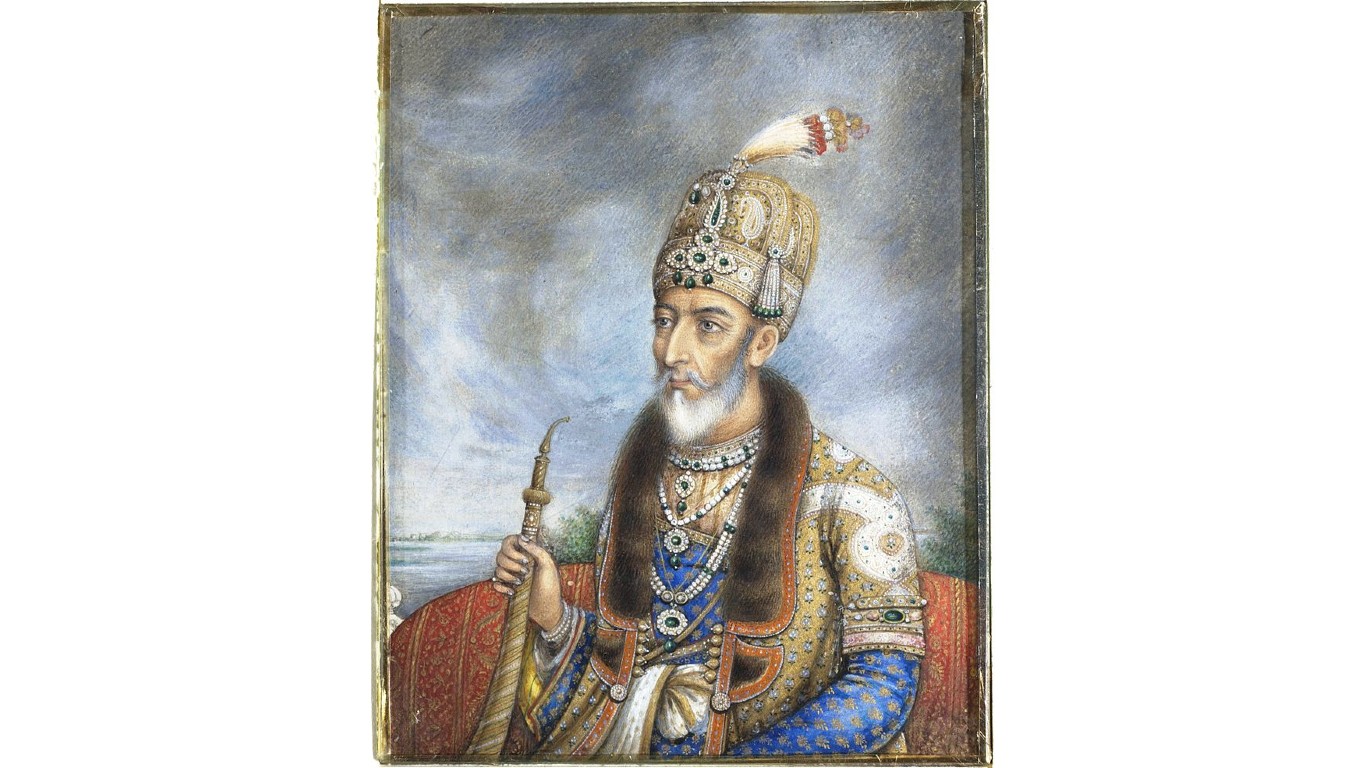
Bahadur Shah Zafar II
> Reign: 1837-1857
> Empire: Mughal
> Empire duration: 1526-1857
The founder of the Mughal Empire, Babur Begh, was a descendant of Genghis Khan and Tamerlane. He established the empire after winning a battle against the Sultan of Delhi in 1526. At its height, the Mughal Empire extended from over most of the Indian subcontinent and into Central Asia. The Mughal Empire was eventually weakened by the rival Maratha Empire, and it ultimately ended after the 1857 Indian Rebellion suppressed by the British. Bahadur Shah Zafar II was the last ruler of the Mughal Empire. He was tried for treason by the British for his role in the rebellion and was exiled to Burma, where he died.
[in-text-ad]
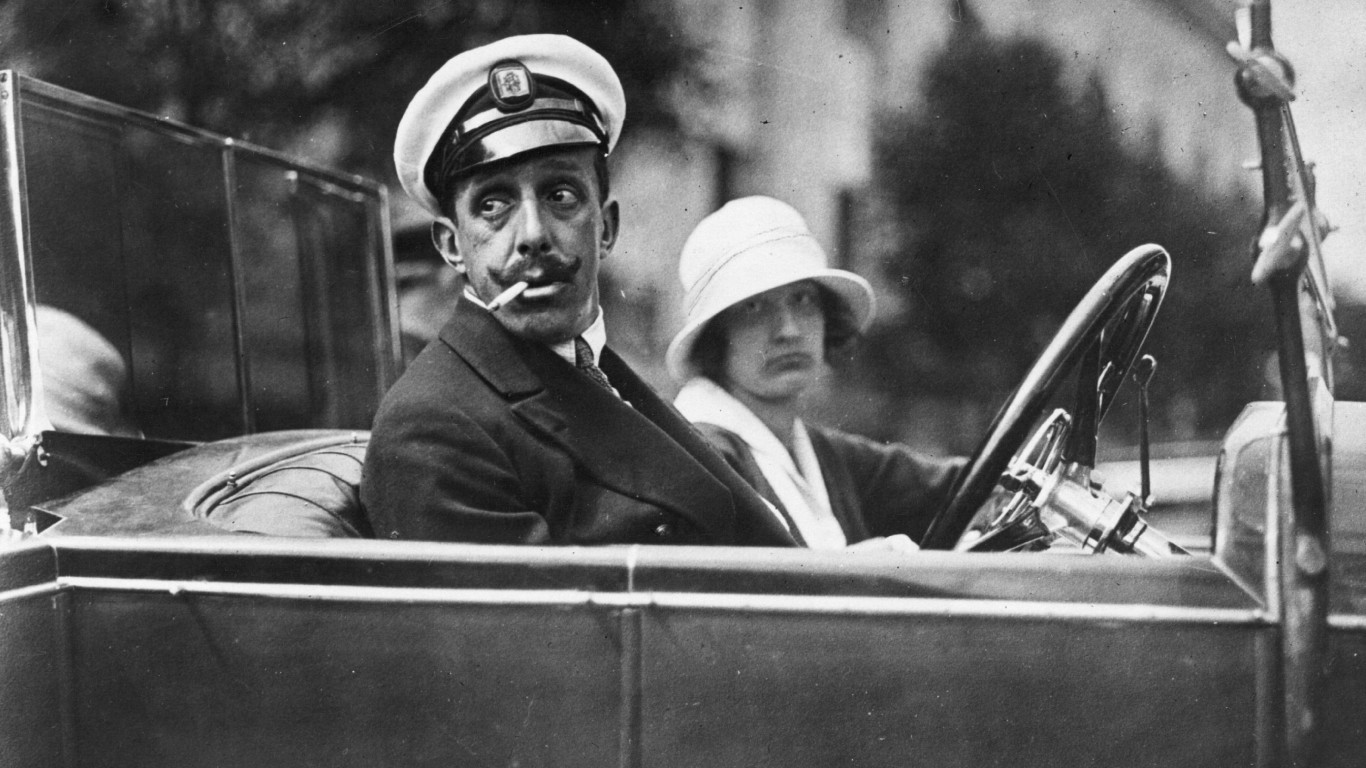
Alfonso XIII
> Reign: 1902-1931
> Empire: Spanish
> Empire duration: 1492-1931
Some historians count the birth of the Spanish Empire to 1479 when the so-called Catholic Monarchs, Isabella I of Castile and Ferdinand II of Aragon, unified Spain, though it is more commonly said to date from 1492, after the Spanish expelled the Moors from the Iberian Peninsula and began sending its sailors across the Atlantic and Pacific oceans to explore and trade with distant lands. Spain led global exploration and the colonization of territories in the 15th and 16th centuries, including the conquests of the Aztec and Incan empires in South America. Gold and silver from its newly won colonies flowed into the empire, bankrolling wars in Europe.
The Spanish Empire was the largest in the world into the 18th century, until it suffered military and economic setbacks. Spain turned over the vast Louisiana Territory to France, which eventually sold it to the U.S., and the Peninsular War in the early 19th century devastated Spain’s ability to sustain its empire. Spain lost its Pacific possessions in the aftermath of the Spanish-American War in 1898. Alfonso XIII was king at the time, and he ruled until 1931, when the Second Republic was established. Though Spain no longer has any overseas possessions of any significance, it became a monarchy again in 1978. Felipe VI is currently the king.

Puyi
> Reign: 1908-1912
> Empire: Chinese
> Empire duration: 221 B.C.-1912
Puyi was the last emperor of the Qing Dynasty in China. He was forced to abdicate in 1912, ending the 267-year Qing rule and the more-than 2,000-year-old imperial system in China. After a revolution, the empire was replaced by the Republic of China, led by President Sun Yat-sen, which lasted until 1949. (The warlord Zhang Xun restored Puyi as emperor between July 1 and 12, 1917, but after Republican forces bombed the Forbidden City, Puyi gave up his claims. The Japanese later installed him as “emperor” of the puppet state of Manchukuo – Manchuria – a post he held until the end of World War II.)

Tsar Nicholas II
> Reign: 1894-1917
> Empire: Russian
> Empire duration: 1721-1917
The Russian Empire was the third-largest ever, stretching over parts of Europe, Asia, and North America. Even though it was considered one of the great powers, Russia was behind European nations such as Germany and Great Britain in terms of technology, transportation, military expertise, and education, and entered World War I ill-prepared to fight on 20th-century terms. It suffered terrible defeats that stirred mutinies and revolts. Sensing an opportunity to knock Russia out of the war, Germany helped exiled Bolshevik leader Vladimir Lenin return to Russia and lead a revolution. The Bolsheviks won and Tsar Nicholas II abdicated, ultimately assassinating the tsar and his family, ending the Romanov dynasty.
[in-text-ad-2]
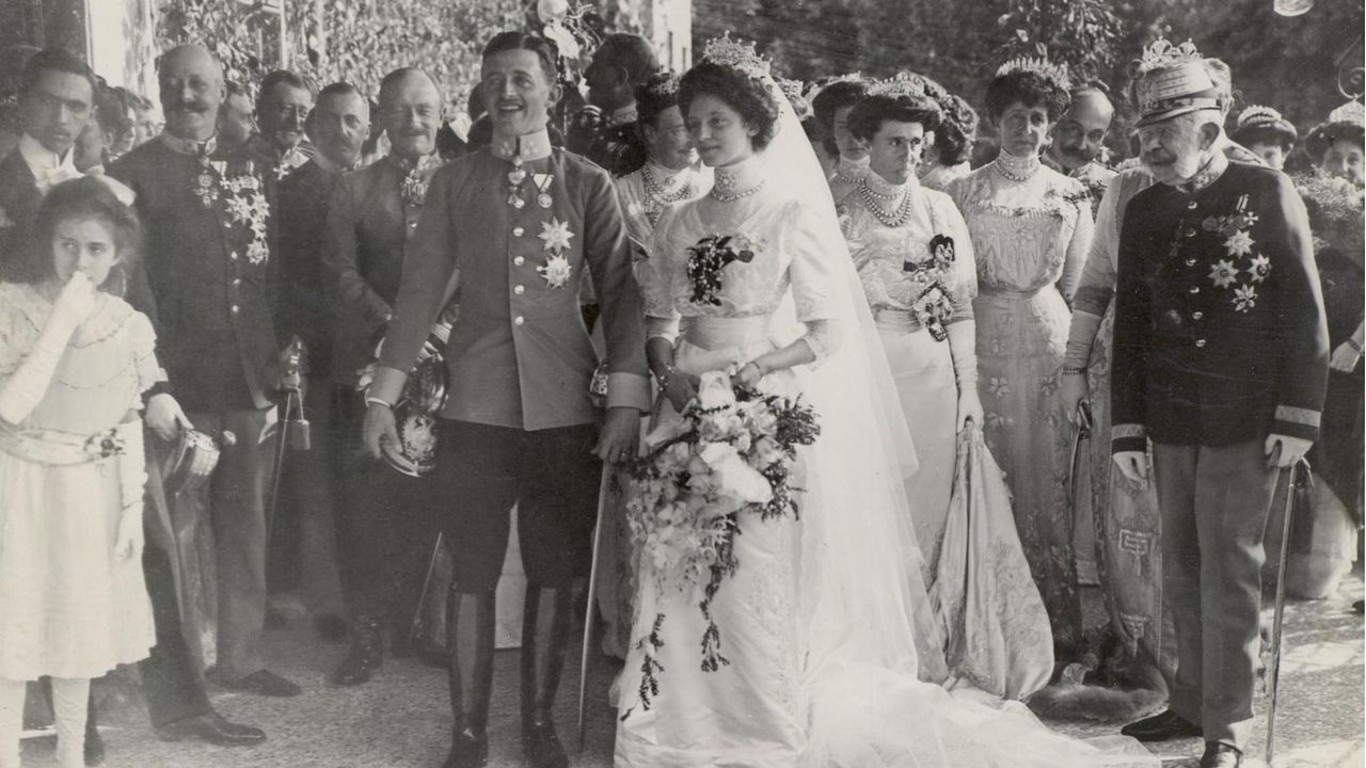
Charles I
> Reign: 1916-1918
> Empire: Austria-Hungarian
> Empire duration: 1867-1918
The dual monarchy of Austria-Hungary, created in the wake of revolutions in Central Europe in the mid 19th century, was composed of polyglot nationalities all vying for nationhood. The assassination of Archduke Franz Ferdinand, heir to the Habsburg throne, by a Serbian national in 1914, set in motion the gears of war that ultimately led to to the dissolution of the empire. As the war wound down, ethnic groups clamoring for self-determination formed their own nations, including Hungary, Czechoslovakia, Yugoslavia, and Poland. When Emperor Charles (or Karl) I renounced the right to participate in Austrian affairs of government on Nov. 11 and in Hungarian matters two days later, Austria-Hungary was no more.
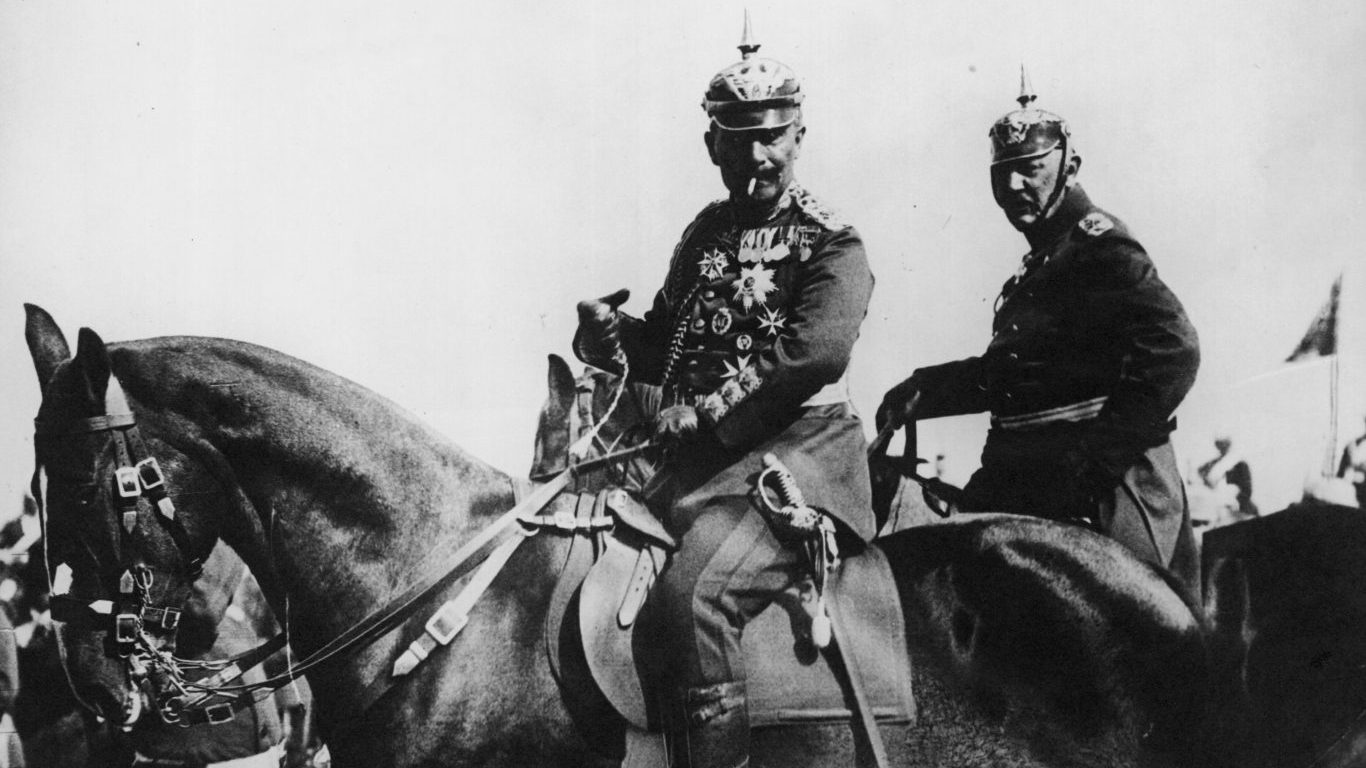
Kaiser Wilhelm II
> Reign: 1888-1918
> Empire: German
> Empire duration: 1871-1918
The German Empire had a brief though consequential impact on world history. Formed following the defeat of France in the Franco-Prussian War of 1870, it experienced spectacular economic growth domestically, becoming one of the world’s biggest economies. It also sought colonial possessions in Africa and Asia, following other European powers in seizing territories on those continents. The empire also embarked on a dramatic expansion of its army and naval forces, putting it in competition with France and Great Britain – helping to set the stage for World War I. After four years of war with Russia and the Western Allies, Germany was on the brink of revolution in 1918. Kaiser Wilhelm II lost the confidence of the German military and was forced to abdicate on Nov. 9, 1918. He lived in exile in Holland, surviving long enough to see Germany vanquish its opponents in the early days of World War II.
[in-text-ad]
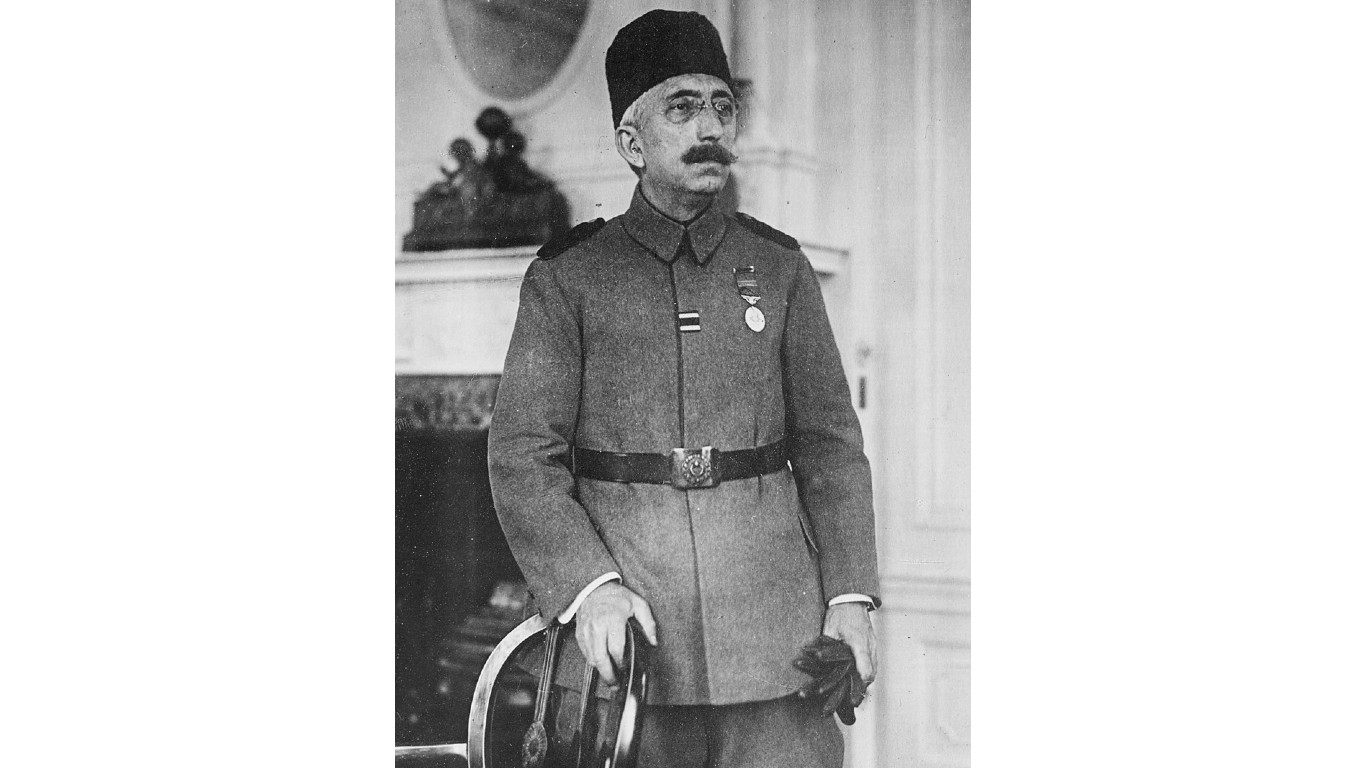
Mehmed VI
> Reign: 1918-1922
> Empire: Ottoman
> Empire duration: circa 1300-1922
Mehmed VI was the 36th and last Sultan of the Ottoman Empire, reigning from 1918 to 1922. He succeeded his brother, Mehmed V, who died four months before the end of World War I. By the time Mehmed VI assumed leadership of the more than 600-year-old empire, it was crumbling, beset by nationalist stirrings in territories in Eastern Europe and the Arab world, administrative inefficiencies, and military setbacks. A series of treaties with the Western Allies angered Turkish nationalists, who forced out the sultan. He abdicated and lived out the rest of his days in Italy.
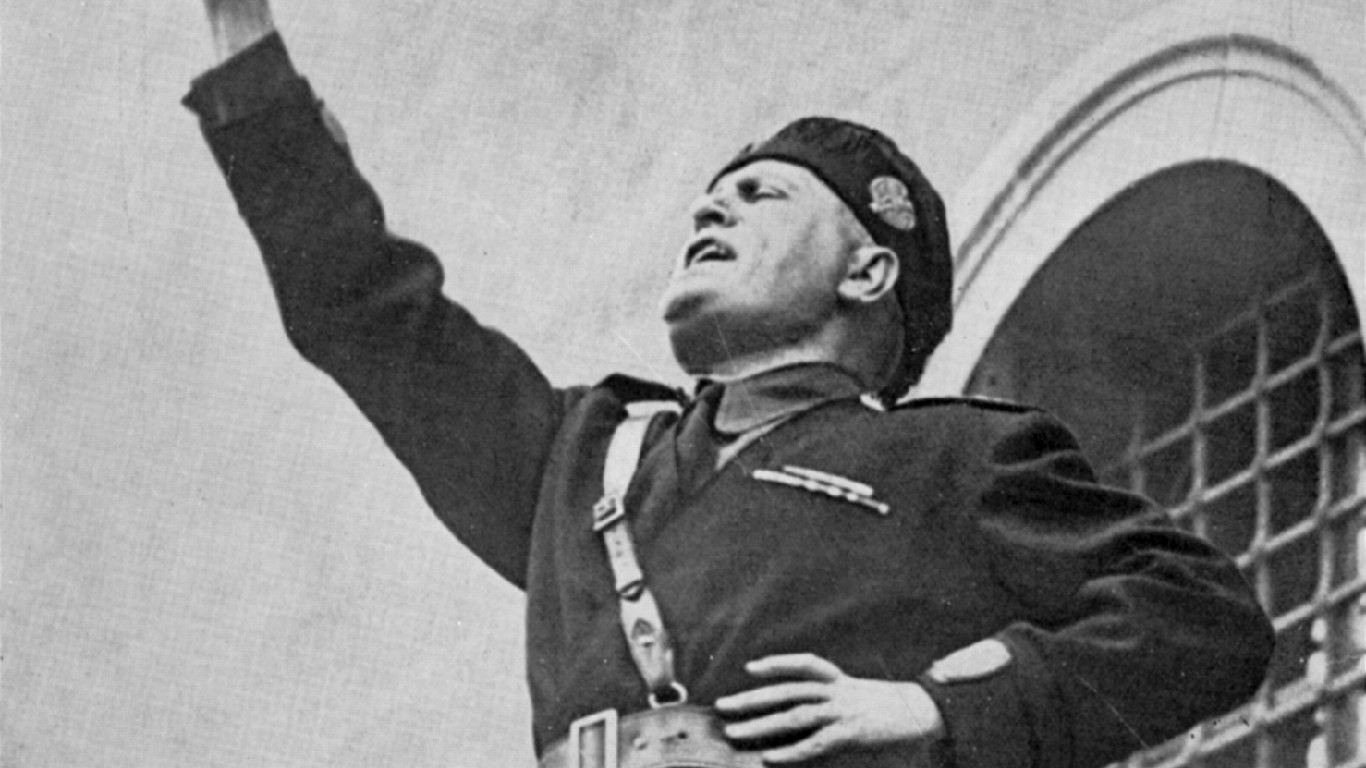
Benito Mussolini
> Reign: 1922-1943
> Empire: Italian
> Empire duration: 1922-1943
Benito Mussolini, Il Duce, had visions of a latter-day Roman Empire when he became leader of Italy in 1922. The Italian dictator attacked Ethiopia in 1935, gambling that the newly formed League of Nations would do nothing to stop him. Ethiopia was no match for Italy, but Italian successes on the battlefield would be few afterward. A campaign against Greece went badly and disaster was averted only when Germany, Italy’s ally, intervened. Italian military disasters followed in North Africa. After the Allies invaded Italy itself in 1943, Mussolini was ousted when a fascist council asked King Victor Emmanuel III to resume his rule.
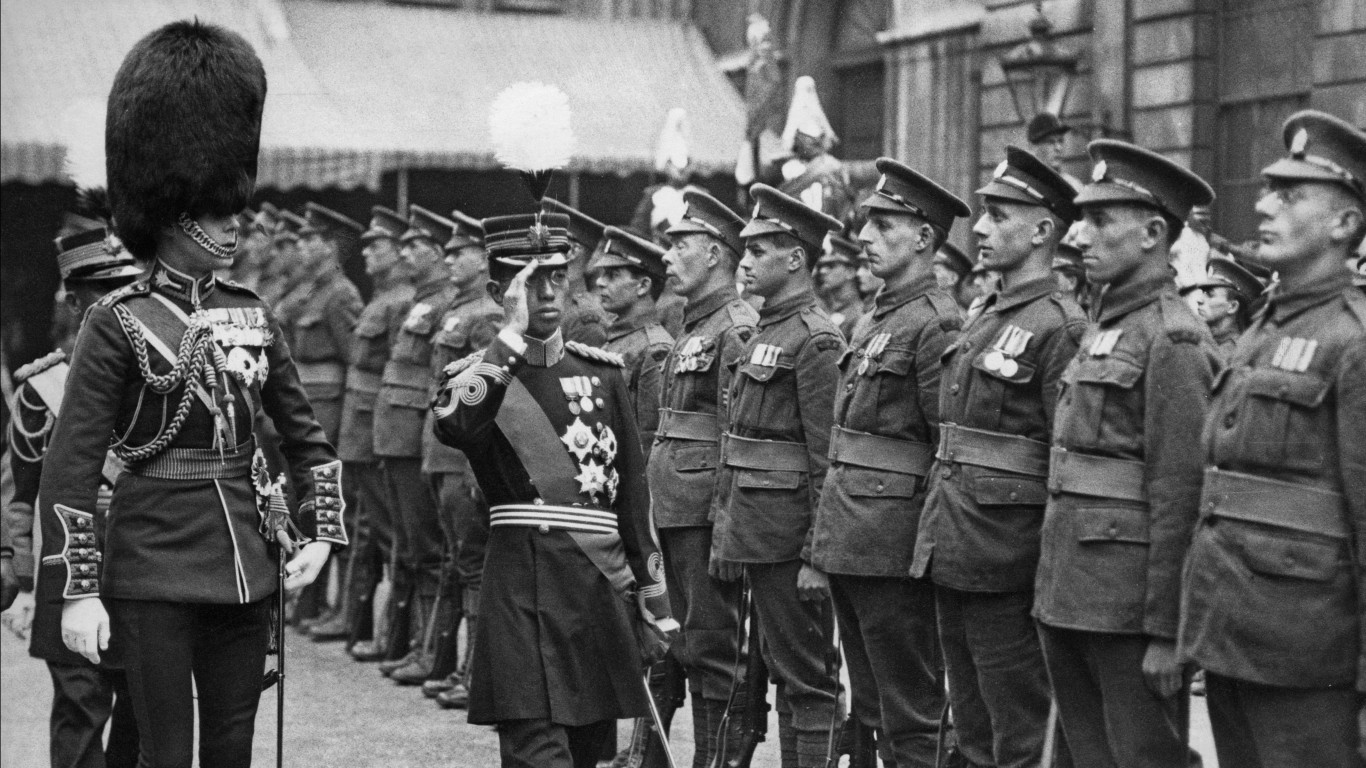
Hirohito
> Reign: 1928-1947
> Empire: Japanese
> Empire duration: 1868-1947
The Japanese Empire was founded in 1868 when supporters of the emperor Meiji ousted Yoshinobu, the last Tokugawa shogun. Japan vaulted onto the world stage following its defeat of Russia in the Russo-Japanese War in 1904-5. It joined the Allies against the Central Powers in World War I and extended its influence in the Pacific between the wars. Japan invaded China in 1937 and after the attack on the United States at Pearl Harbor four years later, conquered the Philippines, Singapore, Indochina, Burma, the Dutch East Indies, among other Asian territories. The Allies began to retake Japan’s possessions iand launched remorseless air raids on Japan itself, culminating in the two atomic bomb attacks that led to the surrender of the empire. Though Hirohito remained as titular emperor until his death in 1989, the empire effectively ended with the enactment of Japan’s postwar constitution in 1947.
[in-text-ad-2]
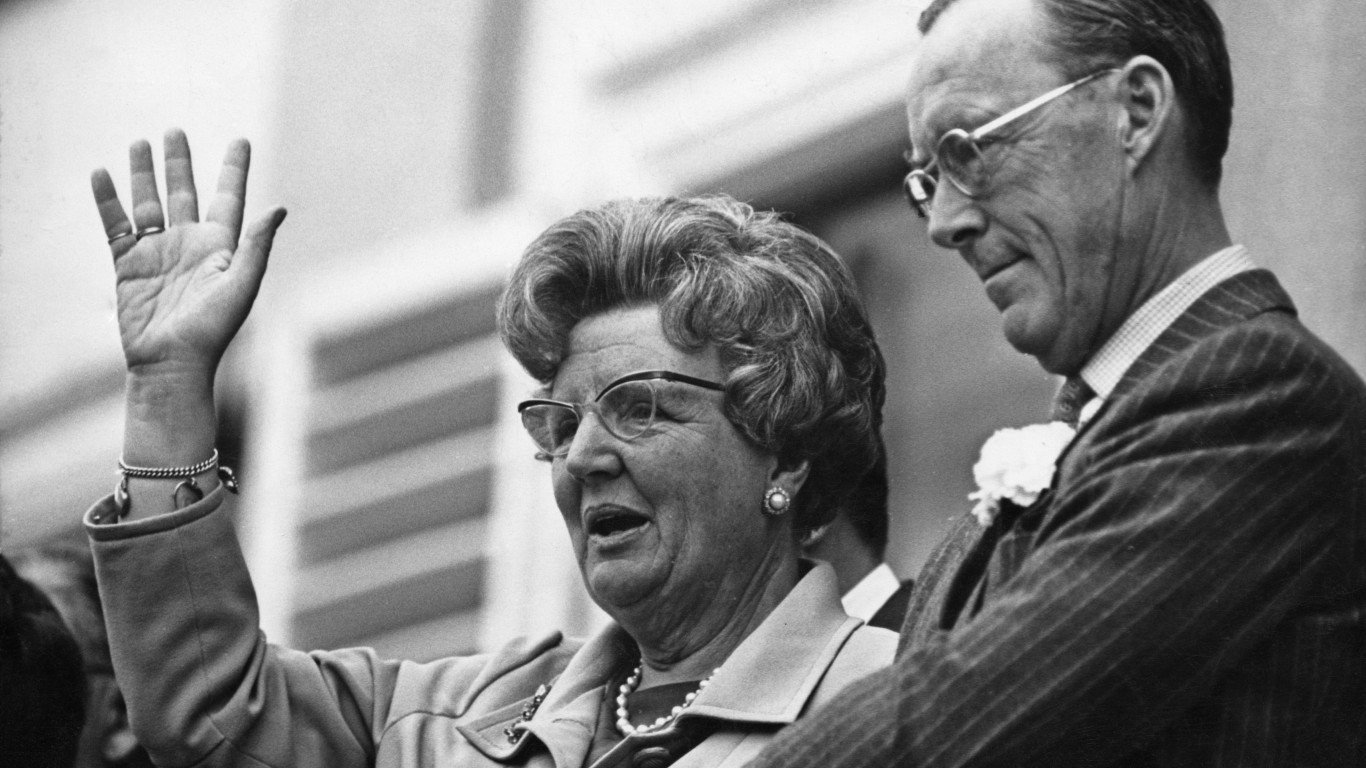
Queen Juliana
> Reign: 1948-1980
> Empire: Dutch
> Empire duration: 1595-1975
Though small in stature now, the Netherlands was a colonial powerhouse beginning in the late 16th century. Buoyed by its naval and trading acumen, the Netherlands established colonies on five continents, including sites in present-day New York State, South Africa, and Indonesia (Dutch East Indies). The Dutch created their empire through state-sponsored capitalist corporations such as the Dutch East India Company, a tactic similar to that employed by the British. The Dutch lost some of their possessions to the British, in fact, in the early 19th century, and gave up most of the rest after World War II. The Dutch tried to hang onto Indonesia, which had been occupied by the Japanese, before finally relinquishing the archipelago in 1949. The last Dutch colony, Suriname, won independence in 1975, signaling the empire’s end, though Juliana remained as queen until ceding the throne to her eldest daughter, Beatrix, in 1980..
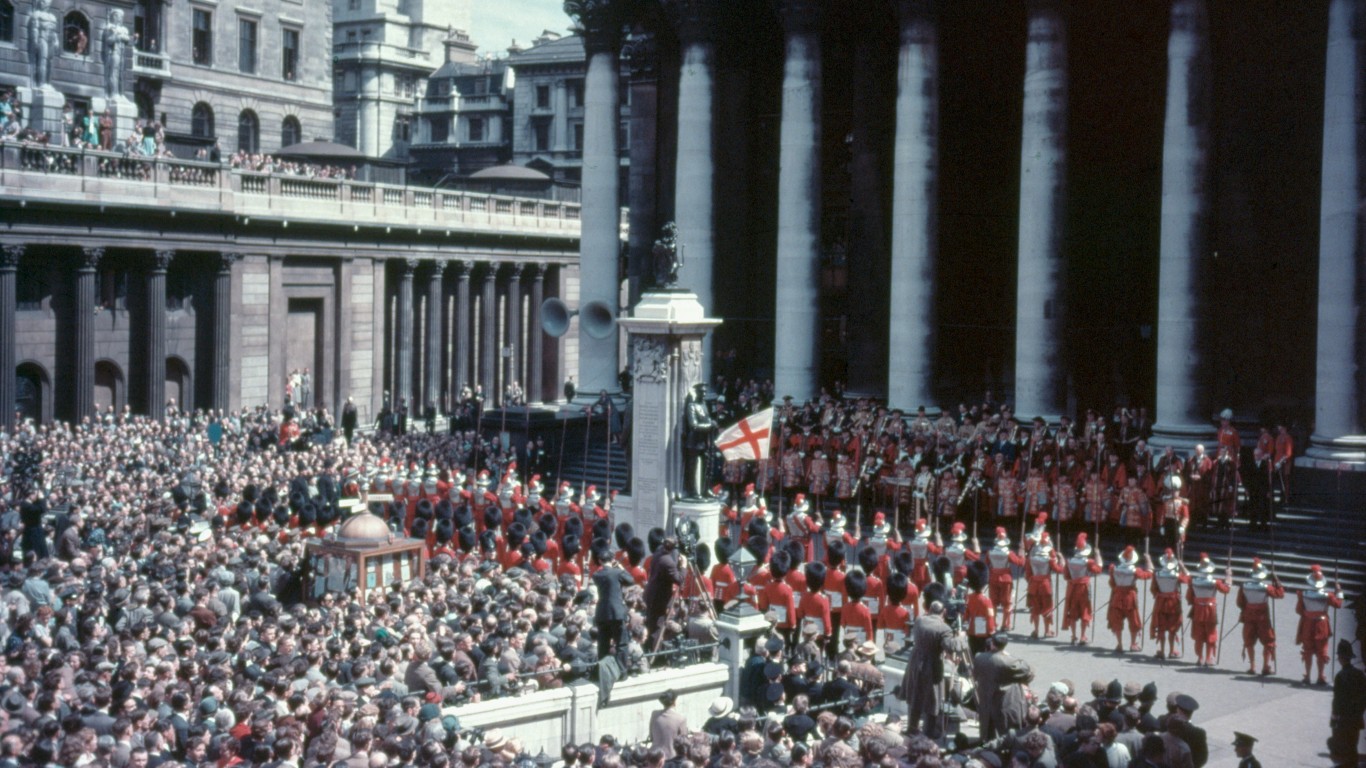
Queen Elizabeth II
> Reign:
> Empire: British
> Empire duration: 1584-1997
The British Empire began with the reign of one queen named Elizabeth and may be said to be ending with another sovereign by the same name. Aside from Britain’s land in the Antarctic, large and mostly unpopulated, the biggest remaining British overseas territory is the Falkland Islands – whose ownership is still disputed with Argentina. When Elizabeth was crowned in 1952, Britain had more than 70 overseas territories. But India, once the jewel in the crown of the British Empire, had recently gained independence, and the empire was fighting to retain colonies in Africa, and would soon lose those. The handover of Hong Kong to China in 1997 effectively marked the end of the empire.
[in-text-ad]
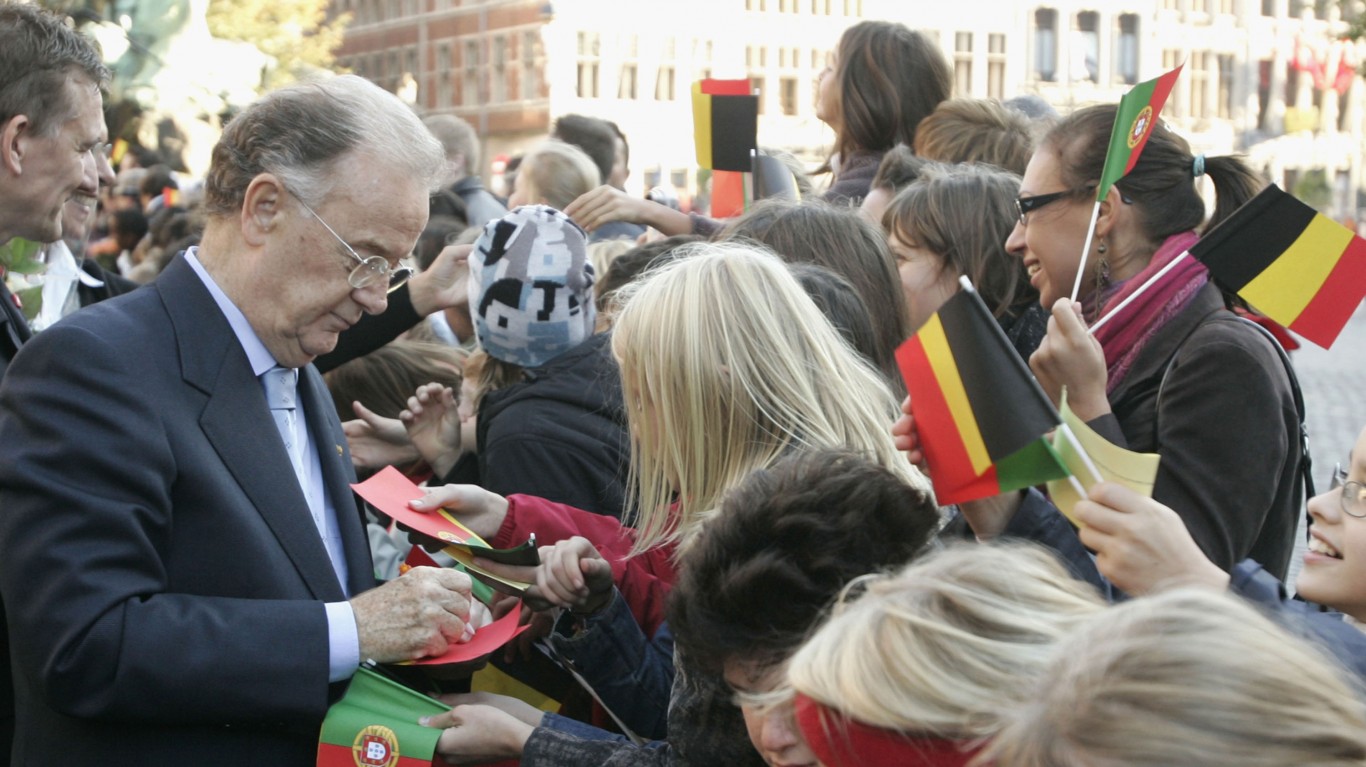
Jorge Sampaio
> Reign:
> Empire: Portuguese
> Empire duration: 1415-1999
Led by skilled sailors such as Vasco de Gama, Portugal became the first true global empire. Beginning in the 15th century, Portuguese explorers helped build an empire with possessions in Africa, Asia, and South America. Many Portuguese outposts were a series of coastal trading locations. Eventually, other European powers grew as powerful and started to pick off parts of Portugal’s empire. By the 20th century, many of its colonies were lost. African independence movements expelled Portugal from both Angola and Mozambique in the 1970s, and Macao in Asia was turned over to China in 1999, during the presidency of Jorge Sampaio.
Methodology
To determine how long the average workweek is around the world, 24/7 Tempo reviewed data on the average hours usually worked among dependent employees in 2020 from the Organisation for Economic Co-operation and Development.
Data on the percentage of dependent employees who work part time — less than 30 hours a week — also came from the OECD and is for 2020. Additional data listed is all from the OECD and is for the most recent period available. All figures are annual except for unemployment figures, which are monthly. All data on employee hours and part-time work are for dependent employees, meaning it does not include self-employed workers.
Get Ready To Retire (Sponsored)
Start by taking a quick retirement quiz from SmartAsset that will match you with up to 3 financial advisors that serve your area and beyond in 5 minutes, or less.
Each advisor has been vetted by SmartAsset and is held to a fiduciary standard to act in your best interests.
Here’s how it works:
1. Answer SmartAsset advisor match quiz
2. Review your pre-screened matches at your leisure. Check out the advisors’ profiles.
3. Speak with advisors at no cost to you. Have an introductory call on the phone or introduction in person and choose whom to work with in the future
Thank you for reading! Have some feedback for us?
Contact the 24/7 Wall St. editorial team.
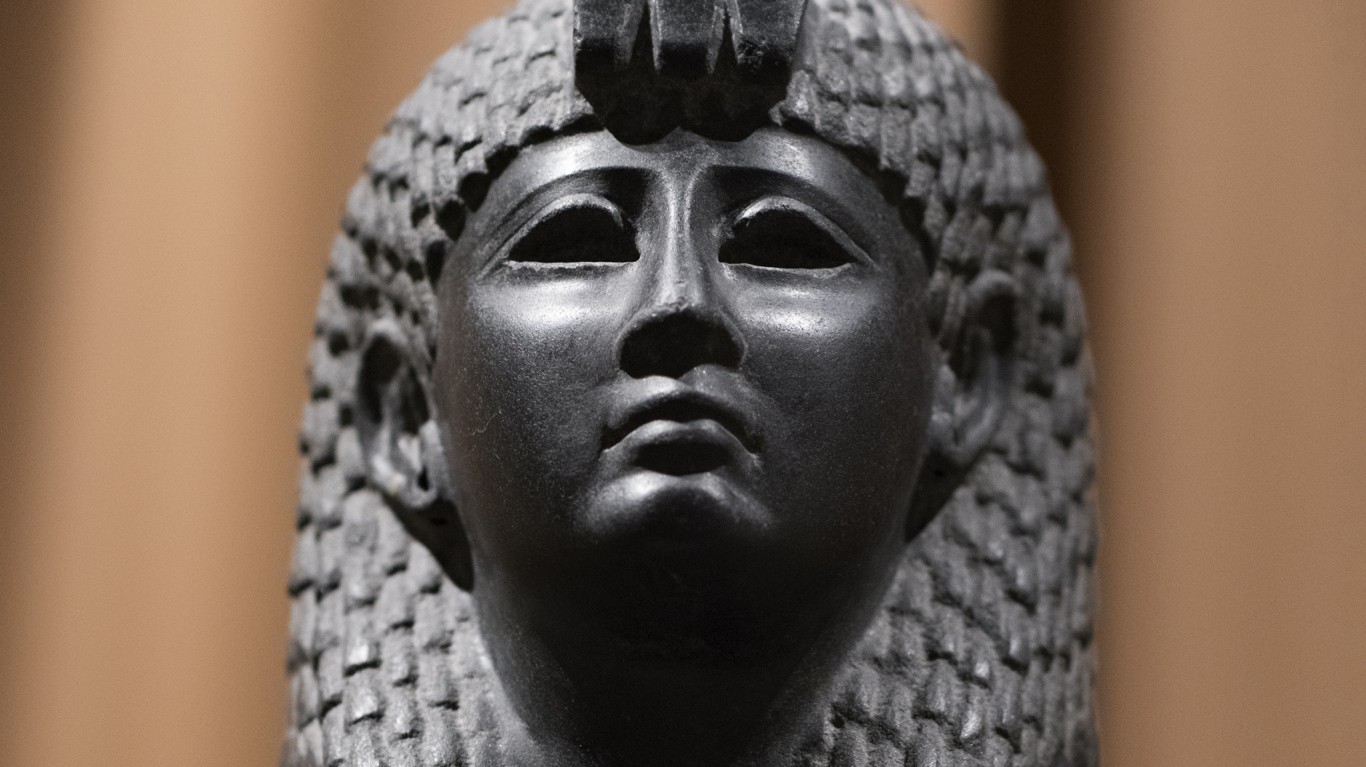
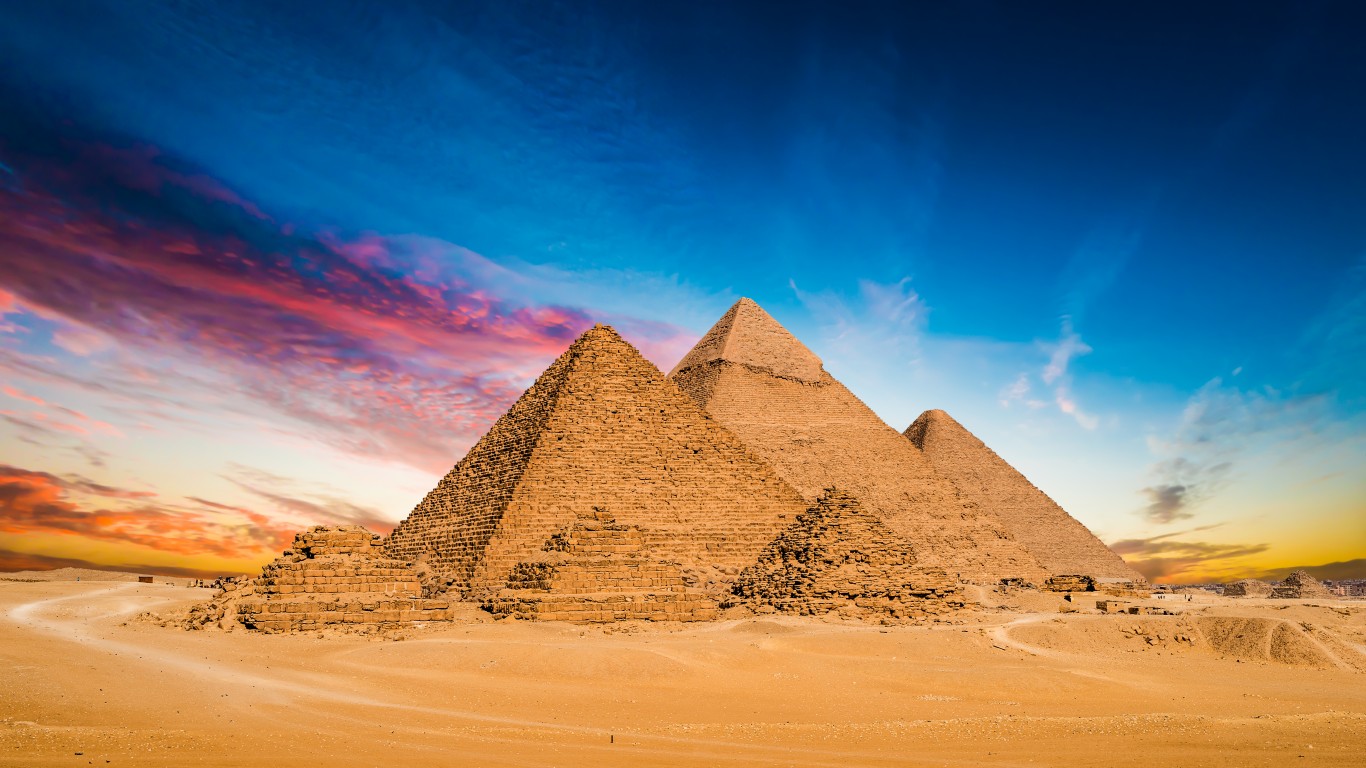 24/7 Wall St.
24/7 Wall St.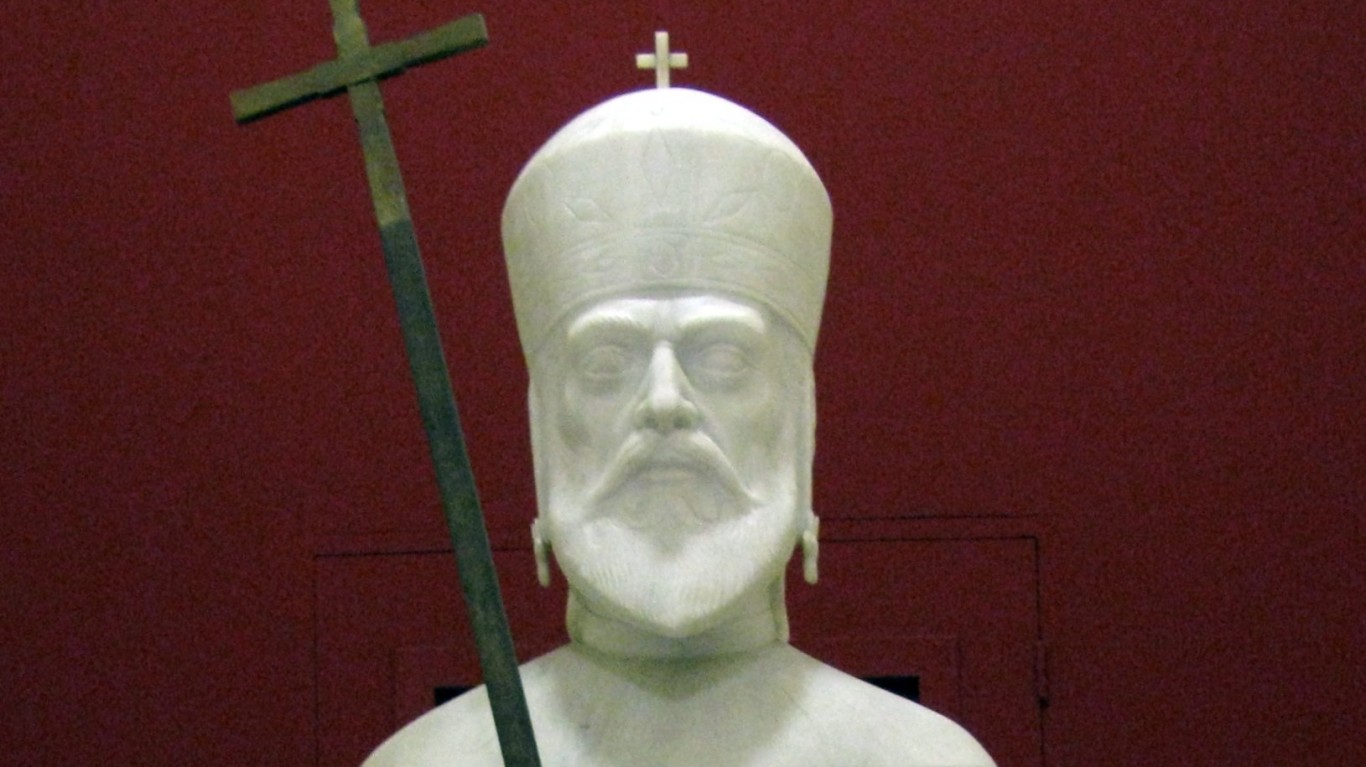
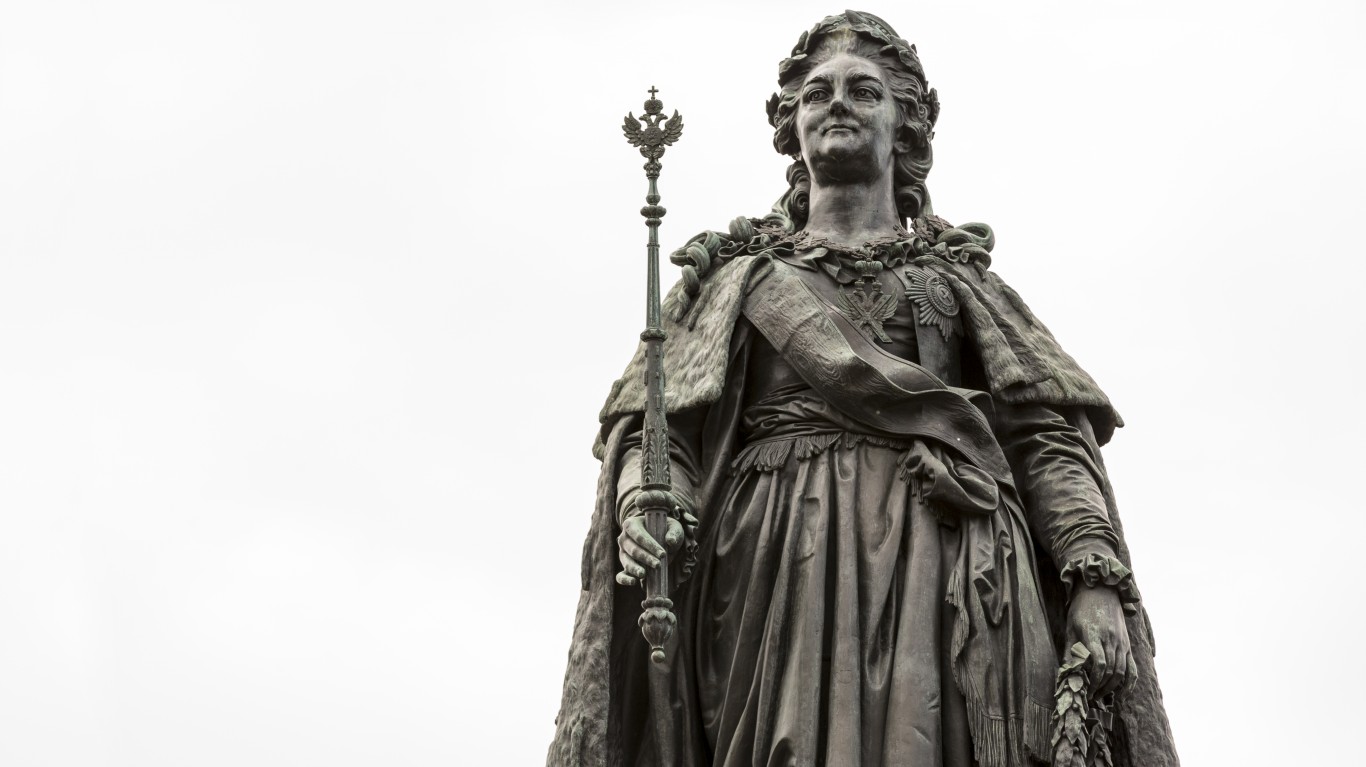 24/7 Wall St.
24/7 Wall St.